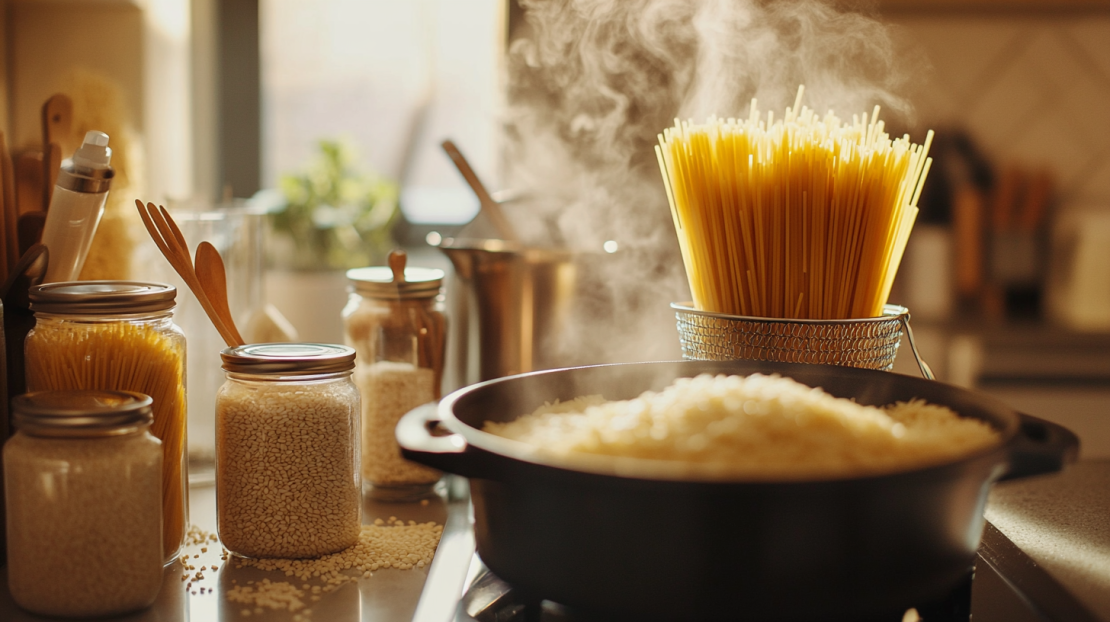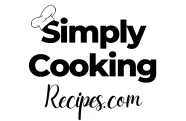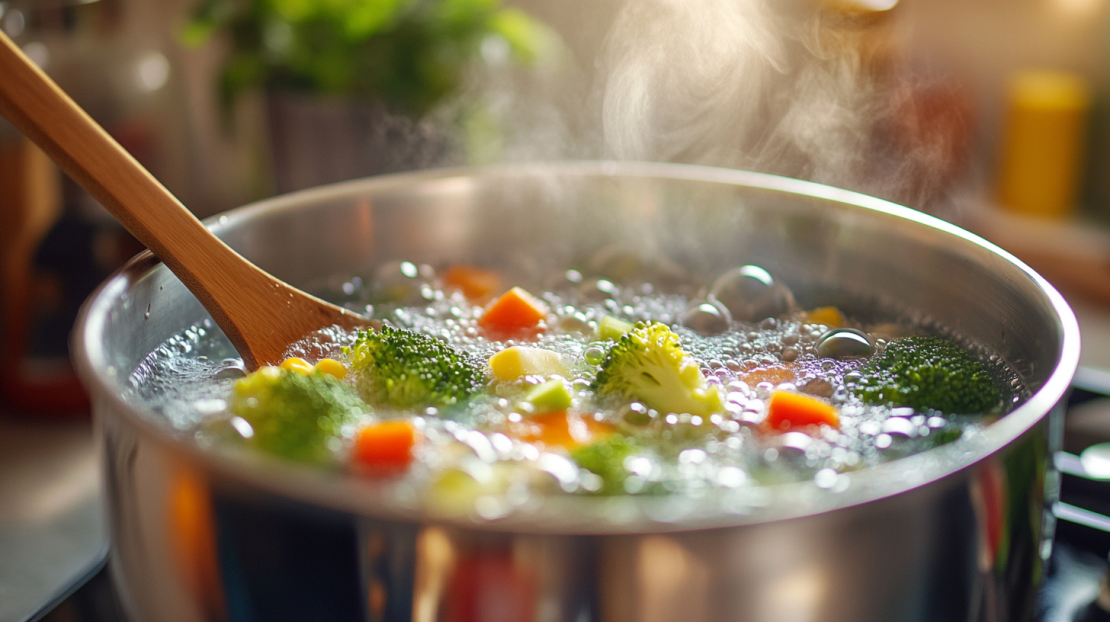Master the Boiling Cooking Method for Perfectly Boiled Food
Ever feel like you’re overcooking or undercooking when you boil food?
It can be tricky, right? You’re not alone. Whether you’re boiling pasta that turns into mush or vegetables that lose their vibrant color, there’s a better way to master this essential cooking method.
You want to cook food quickly, preserve nutrients, and enhance flavors – but boiling can feel like a guessing game.
No more frustration! This guide will teach you everything you need to know about the boiling cooking method. Get ready to boil with confidence and precision!
What Is Boiling?
Boiling seems simple – just water and heat, right? But it’s so much more than that. Scientifically speaking, boiling happens when a liquid reaches its boiling point, about 212°F (100°C) at sea level.
When water boils, it creates bubbles that rise to the surface and pop. The process of boiling helps cook food evenly, making it tender, flavorful, and ready to eat.
Why Do We Boil Food?
Boiling is one of the oldest, simplest cooking techniques out there.
It’s used to soften tough foods, cook starchy ingredients like rice and pasta, and create broths that are the base for soups and stews.
It’s efficient, easy to control, and perfect for big-batch cooking.
Boiling vs. Simmering: What’s the Difference?
A common mistake is confusing boiling with simmering.
While both involve cooking food in liquid, boiling is much more aggressive.
It happens at higher temperatures and creates large bubbles that rapidly break the surface.
Simmering, on the other hand, is more gentle, with small bubbles gently rising to the top.
For delicate foods like fish or eggs, simmering is often the better choice because it cooks food gently without breaking it apart.
The Science Behind Boiling
When water boils, it changes from a liquid to a gas, releasing energy that helps cook food evenly.
But did you know that the altitude you’re cooking at can change how water boils?
At higher elevations, water boils at lower temperatures, so you might need to cook your food longer.
That’s why boiling an egg in the mountains takes more time than at sea level!
How Salt and Sugar Affect Boiling
Adding salt to water does more than just flavor your food; it also nudges up the boiling point slightly.
This means salted water will be a bit hotter than plain water, helping your food cook a little quicker.
On the other hand, adding sugar also raises the boiling point, though not as much as salt.
This can be useful when you’re making sweets that need sugar to reach high temps, far above the typical boiling point.
That said, the effect of both salt and sugar on boiling point is minor – only a couple of degrees.
So while it’s an interesting tidbit of kitchen science, it won’t dramatically change the cooking process in most cases.
Types of Foods You Can Boil

You can boil almost anything, but some foods take to this method better than others. Here’s a list of the most common ingredients people cook by boiling:
- Vegetables: Boiling helps soften veggies like potatoes, carrots, and beets. To keep them vibrant, don’t overcook them!
- Pasta and Grains: Pasta is a classic boiled food. Boil it until it’s “al dente,” meaning it still has a little bite. Rice, quinoa, and other grains also benefit from boiling.
- Eggs: Hard-boiled, soft-boiled, poached – you can do it all with boiling water.
- Seafood: Shrimp, lobster, and crabs cook quickly and retain their flavor when boiled.
- Meats and Broths: Boiling tough cuts of meat or bones helps create rich, flavorful broths. It’s the base of many soups and stews.
Vegetables
| Food Type | Boiling Time | Optimal Temperature | Salt to Water Ratio | Tips for Best Results |
|---|---|---|---|---|
| Potatoes (whole) | 20-30 minutes | 212°F (100°C) | 1 tbsp salt per 1 quart | Start in cold water, bring to a boil; test with a fork for tenderness. |
| Potatoes (diced) | 10-15 minutes | 212°F (100°C) | 1 tbsp salt per 1 quart | Cut into equal-sized pieces for even cooking. |
| Carrots | 7-10 minutes | 212°F (100°C) | 1 tsp salt per 1 quart | Cook until fork-tender but not mushy. |
| Broccoli | 3-5 minutes | 212°F (100°C) | 1 tsp salt per 1 quart | Blanch in ice water immediately after boiling to preserve color. |
| Green Beans | 4-5 minutes | 212°F (100°C) | 1 tsp salt per 1 quart | Blanch for a crisp texture or boil longer for tenderness. |
| Corn on the Cob | 5-7 minutes | 212°F (100°C) | 1 tbsp salt per 1 quart | Add a pinch of sugar to bring out the sweetness. |
Pasta & Grains
| Food Type | Boiling Time | Optimal Temperature | Salt to Water Ratio | Tips for Best Results |
|---|---|---|---|---|
| Dry Pasta (e.g., spaghetti) | 8-12 minutes | 212°F (100°C) | 1-2 tbsp salt per 1 quart | Stir occasionally to prevent sticking; cook al dente for texture. |
| Rice (white) | 15-18 minutes | 212°F (100°C) | None | Use 1:2 rice to water ratio; simmer covered. |
| Rice (brown) | 35-40 minutes | 212°F (100°C) | None | Requires more water; let it sit covered after boiling to steam. |
| Quinoa | 15 minutes | 212°F (100°C) | None | Rinse thoroughly before boiling to remove bitterness. |
Eggs
| Food Type | Boiling Time | Optimal Temperature | Salt to Water Ratio | Tips for Best Results |
|---|---|---|---|---|
| Hard-boiled eggs | 9-12 minutes | 212°F (100°C) | None | Start in cold water; cool in ice water for easy peeling. |
| Soft-boiled eggs | 4-6 minutes | 212°F (100°C) | None | Lower gently into boiling water; adjust time for runnier yolks. |
Seafood
| Food Type | Boiling Time | Optimal Temperature | Salt to Water Ratio | Tips for Best Results |
|---|---|---|---|---|
| Shrimp (medium size) | 2-3 minutes | 212°F (100°C) | 1 tbsp salt per 1 quart | Boil until they turn pink and opaque; do not overcook. |
| Lobster | 8-12 minutes | 212°F (100°C) | 1 tbsp salt per 1 quart | Cook until the shell turns bright red and meat is firm. |
| Crab (whole) | 12-15 minutes | 212°F (100°C) | 1 tbsp salt per 1 quart | Add seasoning to the water for extra flavor. |
Meats & Poultry
| Food Type | Boiling Time | Optimal Temperature | Salt to Water Ratio | Tips for Best Results |
|---|---|---|---|---|
| Chicken (whole) | 1-1.5 hours | Simmering, not boiling | 1 tbsp salt per 1 quart | Simmer gently to keep the meat tender; skim off any foam. |
| Chicken (pieces) | 20-30 minutes | Simmering, not boiling | 1 tbsp salt per 1 quart | Add aromatics like garlic, onions, and bay leaves for flavor. |
| Beef (stew meat) | 1.5-2 hours | Simmering, not boiling | 1 tbsp salt per 1 quart | Slow simmer for tenderness; use the cooking liquid as broth. |
Legumes
| Food Type | Boiling Time | Optimal Temperature | Salt to Water Ratio | Tips for Best Results |
|---|---|---|---|---|
| Lentils (brown/green) | 20-30 minutes | 212°F (100°C) | None | No need to soak; boil until soft but not mushy. |
| Chickpeas | 1-1.5 hours | 212°F (100°C) | None | Soak overnight before boiling for faster cooking. |
| Black Beans | 1-1.5 hours | 212°F (100°C) | None | Soaking reduces cooking time, but it’s not necessary. |
How to Boil Food Correctly
Boiling isn’t just about throwing food in hot water. Timing, temperature, and technique matter. Here’s how to get it right.
Step-by-Step Guide to Boiling
- Start with the Right Amount of Water: Use enough water to fully submerge the food, but don’t overfill the pot. The more water, the longer it takes to boil.
- Bring Water to a Rolling Boil: A rolling boil means the water is bubbling vigorously. For most foods, you’ll want to start cooking when the water reaches this point.
- Salt the Water (Optional): Add 1-2 tablespoons of salt per quart of water for pasta or vegetables. This enhances flavor but isn’t always necessary for meats or grains.
- Add the Food: Depending on the recipe, you may need to add food to already boiling water or cold water that you bring to a boil together (like potatoes).
- Monitor and Stir: Keep an eye on the pot to ensure it stays at a boil, and stir the food occasionally to prevent sticking.
- Check for Doneness: Use a fork or knife to test the food. For pasta, you want it to be firm but cooked. For vegetables, aim for tender but not mushy.
Common Mistakes to Avoid
- Overcooking: Boiling food too long makes it soggy and flavorless. Watch the clock!
- Using Too Much Water: If you use more water than needed, it will take longer to boil, and you may lose nutrients that leach into the water.
- Boiling Delicate Foods: Stick to simmering for more delicate foods like eggs or fish to avoid breaking them apart.
The Health Benefits of Boiling

Boiling is a healthy way to cook because it doesn’t require added fat. Plus, it helps retain water-soluble vitamins like vitamin C, which are often lost in other cooking methods. However, if you over-boil food, you can lose some nutrients into the cooking water. The best way to avoid this is to use the cooking liquid in your dish, like making soup or stew, where the nutrients are preserved in the broth.
Boiling for Special Diets
Boiling is an excellent cooking method for people following low-fat or heart-healthy diets. Since it requires no oil or fat, boiled foods are naturally lower in calories. It’s also great for preserving the flavors of fresh ingredients without masking them with sauces or seasonings.
Tips and Tricks for Perfect Boiling
- Use a Lid: Cover the pot to help the water boil faster by trapping heat.
- Add Salt After the Water Boils: This helps the salt dissolve more quickly.
- Blanching: Briefly boiling veggies then plunging them into ice water helps preserve their color and crunch.
- Use the Cooking Water: Don’t waste the water you boiled food in! It’s full of flavor and nutrients – perfect for soups or sauces.
Boiling vs. Other Cooking Methods
Boiling is simple, but how does it stack up against other cooking methods like steaming or roasting?
- Boiling vs. Steaming: Steaming is a gentler way to cook vegetables, helping them retain more nutrients and a firmer texture. Boiling is faster but can leach nutrients if overdone.
- Boiling vs. Roasting: Roasting adds a rich, caramelized flavor to foods like vegetables and meats. Boiling, by contrast, is quicker and keeps foods moist but may not develop as much flavor.
- Boiling vs. Sautéing: Sautéing uses oil to cook food quickly, adding a crispy exterior. Boiling is better for softening and tenderizing but doesn’t give you that crispy finish.
FAQs About Boiling Cooking Method
The ideal temperature for boiling is 212°F (100°C), but keep in mind that altitude can affect boiling time.
Yes, salting water can help enhance the flavor of boiled vegetables and preserve their natural colors.
Stir the pasta in boiling water frequently and use enough water to allow the pasta to move freely.
Yes, boiling can cause some nutrients, especially water-soluble vitamins, to leach into the water. To avoid this, use the cooking liquid in your recipe.
For hard-boiled eggs, place them in cold water, bring to a boil, then reduce to a simmer for 9-12 minutes.
Yes, but keep in mind frozen foods will take longer to cook. Add a few extra minutes to your cooking time.
Use a meat thermometer to check for the right internal temperature – 165°F for most meats.


